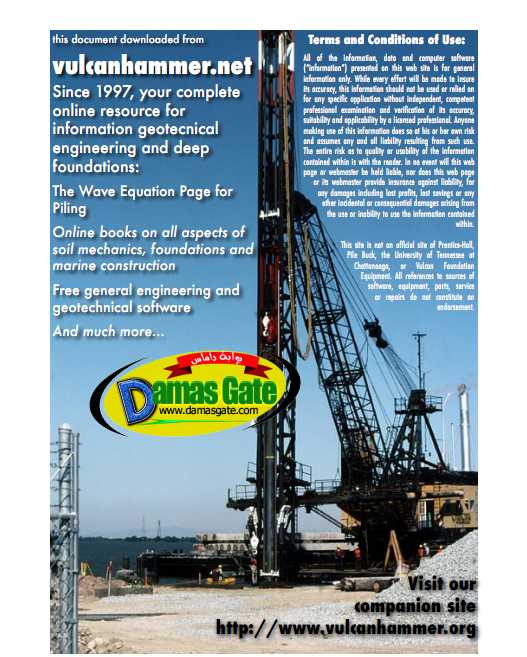Soil Mechanics - A. Verruijt - Delft University of Technology, 2001, 2010

This is the screen version of the book SOIL MECHANICS, an elementary textbook for students of civil engineering.
It can be read using the Adobe Acrobat Reader. Bookmarks are included to search for a chapter.
The book is also available in Dutch, in the file GrondMechBoek.pdf.
Exercises and a summary of the material, including graphical illustrations, are contained in the file SoilMex.ZIP.
All software can be downloaded from the website geo.verruijt.net.
INTRODUCTION
1.1 The discipline
Soil mechanics is the science of equilibrium and motion of soil bodies. Here soil is understood to be the weathered material in the upper layers of
the earth’s crust. The non-weathered material in this crust is denoted as rock, and its mechanics is the discipline of rock mechanics. In general
the difference between soil and rock is roughly that in soils it is possible to dig a trench with simple tools such as a spade or even by hand. In
rock this is impossible, it must first be splintered with heavy equipment such as a chisel, a hammer or a mechanical drilling device. The natural
weathering process of rock is that under the long-term influence of sun, rain and wind, it degenerates into stones. This process is stimulated by
fracturing of rock bodies by freezing and thawing of the water in small crevices in the rock. The coarse stones that are created in mountainous
areas are transported downstream by gravity, often together with water in rivers. By internal friction the stones are gradually reduced in size,
so that the material becomes gradually finer: gravel, sand and eventually silt. In flowing rivers the material may be deposited, the coarsest
material at high velocities, but the finer material only at very small velocities. This means that gravel will be found in the upper reaches of a
river bed, and finer material such as sand and silt in the lower reaches.
Download
http://s18.alxa.net/s18/srvs2/01/Soi....2001.2010.rar